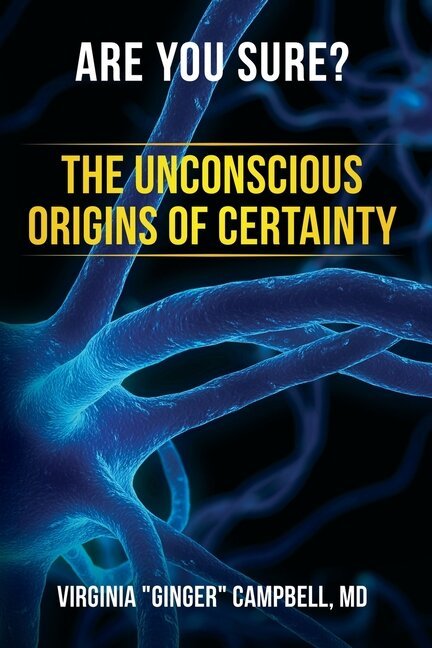Does the Limbic System Exist?
/The term limbic system was made popular in the late 1970's by Carl Sagan's Pulitzer Prize winning book,The Dragons of Eden; but in recent years, many neuroscientists have come to regard the term as misleading, or worse. In this essay I will provide a brief historical overview and discuss the scientific objections to the term limbic system.
History
The highly regarded textbook, Neuroscience: Exploring the Brain (3rd edition, edited by Bear, et. al.) provides a brief overview of the history of the "limbic system concept." It notes that the term "limbic lobe" was introduced back in 1878 by the French neurologist Paul Broca. Broca was describing the area of the medial brain that surrounds the brain stem and corpus callosum. By the 1930's, the evidence suggested that many of the structures in this region were involved in emotion. One expression of this hypothesis was the so-called "Papez circuit" (named after neurologist James Papez). In 1952, James Maclean introduced the term "limbic system," and in 1973, he proposed his famous "triune theory" of brain evolution, which was later popularized in The Dragons of Eden.
In 1998, Jaak Panksepp made extensive use of the "triune brain" model in his groundbreaking book, Affective Neuroscience: The Foundations of Human and Animal Emotions. Panksepp emphasized that primates (including humans) share similar emotional circuitry. This principle has inspired much valuable research into the role of emotion in our mental lives, so that we now recognize that proper functioning of our emotional circuitry is essential to our health.
Thus, the term "limbic system" actually includes two main ideas: the idea that there is a discrete part of the brain that generates mammalian emotions, and the idea that this area evolved as a separate area only in mammals. In the triune theory of brain evolution, primates (including humans) are seen as having inherited three successive brain structures: the reptilian brain, the limbic system, and the neocortex.
Objections
In Neuroscience, the authors observe that, although the evidence certainly supports the the fact that some of the structures in this region are involved in emotion, the Papez circuit is no longer seen as an accurate description. More importantly, they state "The critical point seems to be conceptual, concerning the definition of an emotional system. Given the diversity of emotions we experience, there is no compelling reason to think that only one system--rather than several--is involved. Conversely, solid evidence indicates that some structures involved in emotions are also involved in other functions..." (page 571). Thus, they question applying the term limbic system to the emotional system, because it can not accurately be described as a discrete system of components, such as one would describe the visual system.
The second objection to the term limbic system is that it represents a model of primate brain evolution that has largely been discarded. In Principles of Brain Evolution, Georg Striedter observed that Maclean's "triune brain" theory was "clearly derived" from the work of Ludwig Edinger (1908), who observed that that the forebrain of various vertebrates seemed to differ dramatically, while the lower brain structures appeared to be highly conserved. The key underlying assumption of the "triune brain" theory is that major brain areas were added on as mammals evolved, but this essentially 19th century viewpoint has been supplanted by modern work in neuroanatomy.
Striedter explains how the idea that "brains evolved by the sequential addition of parts was toppled." He concludes "By the 1990's, most comparative neuroanatomists believed that all vertebrate brains are built according to a common plan that varies only in its details." His textbook describes the evidence in support of this "conservative revolution" in great detail. (Streitder, page 35) Note: Striedter's book was discussed in Episode 47.
Conclusions
The term "limbic system" is clearly falling into disuse among neuroscientists, but seems destined to live on the popular imagination. The "triune brain" popularized by Sagan and Maclean has an undeniable appeal, partly because it presents a clear and understandable model that corresponds to our intuitive sense of our place in the world. The problem is that it represents an oversimplified, and possibly misleading picture. Our brains are much more like those of other mammals than this model suggests. Also, the emotional system is much more complex and deeply integrated into the other systems of the brain.
Scientists have a strong preference for precise language. Thus, as described above, the limbic system does not exist, because there is no one clearly defined emotional system in the human brain. Many neuroscientists (especially those involved in comparative neuroanatomy) also avoid the term because of its association with an outmoded view of vertebrate brain evolution.
References
- The Dragons of Eden: Speculations on the Evolution of Human Intelligence, by Carl Sagan.
- Neuroscience: Exploring the Brain, by Mark F Bear, Barry Connors, Michael Paradiso; page 571.
- Principles of Brain Evolution, by Georg F. Striedter; page 35.









